There are many mysteries that shroud Easter Island, also know and Rapa Nui. The islands remoteness and lack of historical records all contribute to its air of mystery. Where did its inhabitants come from? What happened to the once fertile island? How did the great monoliths that dot the island get built?
There are two main theories as to who and how the island was first inhabited
. One legend based on local lore says that a Polynesian chief named Hota Matu'a arrived on the island by canoe with his wife. The other one is based on the research of Thor Heyerdahl(he became famous for sailing a balsa raft name Kon Tiki from South America to the Polynesian island of Puka Puka). He concluded that the early inhabitants actually came from South America – specifically during the collapse of the pre-Inca Tihuanaco civilization, the people fled to the coast and made their way to Easter Island.
According to artefact's found on the island and a couple of species of flora, both theories have merit. Records show that the first inhabitants of the island arrived around 400-700AD. This timing matches the time frame from when the Polynesians migrated through the area. The local arts and crafts and traditional music and dance also provide strong links to there being a link to Polynesia. Items of South American origin, such as sweet potato and totora reeds from Lake Titicaca were also discovered on the island
. Stone masonry skills and the religious practice of sun worship also had hints of a South American influence. Also Thor had proven that it was possible to sail to the area from South America.
It is possible that both cultures peacefully inhabited the island until overcrowding caused war and ultimately the demise of the islanders. At the peak of the civilisation, it is estimated that 9000 people lived on the island and that deforestation, erosion and soil depletion lead to a rapid reduction in the population.
Easter Island was suppose to be a stop on the trip, however due to 'unsafe sea conditions’, we were only able to scenic cruise around the island before sailing away. I don’t really agree with the assessment of the sea conditions but I’m not the one who gets the final call. From what I could see there was a swell however it was a gentle rolling swell and not a crashing against the boat kind of swell. Plus the weather conditions were good enough for the local officials to come out and return via a small ‘tinny’
. There are of course several conspiracy theories going around and quite a few people who are extremely disappointed (the stop at Easter Island was highlight).
As we were sailing a mile offshore, you couldn’t really see much and most of the Moai were only little specks unless you had good binoculars – even then you could only really tell that there was something look at by the groups of people who were huddled around the area on the shore. To add what felt like salt in the ‘sorry no stopping’ wound, the wind was blowing a gale and it was freezing, so not much fun being out in the elements.
There are around 890 Moai on the island. Most of them are standing with their backs to the sea and are carved from hardened volcanic ash, stand about 13 feet high and weigh up to 14tons. It is believed that they represent the spirits of ancestors, chiefs or other high ranking males who held important positions in the history of the island. It is also believed that the moai held a sacred role in the life of the people and acted as ceremonial conduits for communication with the gods
.
Around the island there are several key sites that had we been able to get off the ship we would have visited.
Originally, Easter Islanders had a paramount chief or single leader. Through the years the power levels veered from sole chiefs to a warrior class, known as "matatoa". The figure of a half bird and half man was the symbol of the matatoa; the distinct character connected the sacred site of Orongo. The Birdman cult which replaced the moai cult worship was concentrated in Orongo at a ceremonial site called Mata Ngarau. The location is at an elevation of 250 metres (820 ft), on a narrow ridge between the ocean, and the deep crater of Rano Kau volcano. Around Orongo, there are hundreds of petroglyphs carved with birdman and other images.
Considered the sacred spot of Orongo, Mata Ngarau was the location where birdman priests prayed and chanted for a successful egg hunt. The purpose of the birdman contest was to obtain the first egg of the season from the offshore islet Motu Nui
. Contestants descended the sheer cliffs of Orongo and swam to Motu Nui where they awaited the coming of the birds. Having procured an egg, the contestant swam back and presented it to his sponsor, who then was declared birdman for that year, an important status position.
Anakena is a white corals and beach in Rapa Nui National Park. Anakenahas two ahus, Ahu-Ature has single moai and Ahu Nao-Nao has seven, two of which are deteriorated.
Rano Raraku – This is the main quarry for the Moai. There are around 390 Moai in different stages ofproduction found here, including one that was to be 71 feet in height and weighing twice as much as all other known Moai.
Ahu Tongariki is the largest ahu on the island. Its moai were toppled during the island's civil wars and in the twentieth century the ahu was swept inland by a tsunami. It has since been restored and has fifteen moai including an 86 tonne moai that was the heaviest ever erected on the island
. All the moai here face sunset during Summer Solstice.
Once the scenic cruising had finished, it was time to find somewhere warm. I opted for a deck chair that wasa little bit out of the wind. Wearing my jeans, a jumper, long socks and shoes, I spent a fair chunk of the afternoon lying in the sun trying to impersonate a lizard. Interestingly I wasn’t the only cold person trying to get warm again.
The circumnavigation and cold breeze made Mum relapse and so she spent most of the day back in the cabin trying to recuperate.
Fun fact:
The inhabitants of Easter Island possessed a script called Rongoro. It was the only written language in the whole of Oceania.
And mysterious it will remain
Tuesday, August 12, 2014
 Easter Island, Chile
Easter Island, Chile
Other Entries
-
70Puppeteers
Jul 2617 days prior At Sea, Bahamasphoto_camera2videocam 0comment 0
At Sea, Bahamasphoto_camera2videocam 0comment 0 -
71Two islands one country
Jul 2716 days prior Antigua, Antigua and Barbudaphoto_camera11videocam 0comment 0
Antigua, Antigua and Barbudaphoto_camera11videocam 0comment 0 -
72Let’s make it happen, I don’t see why
Jul 2815 days prior Saint Lucia, Saint Luciaphoto_camera9videocam 0comment 1
Saint Lucia, Saint Luciaphoto_camera9videocam 0comment 1 -
73It’s a little bit warm
Jul 2914 days prior At Sea, Venezuelaphoto_camera0videocam 0comment 0
At Sea, Venezuelaphoto_camera0videocam 0comment 0 -
74Let there be bubbles
Jul 3013 days prior Bonaire, Netherlands Antillesphoto_camera14videocam 0comment 0
Bonaire, Netherlands Antillesphoto_camera14videocam 0comment 0 -
75Emergency!
Jul 3112 days prior At Sea, Colombiaphoto_camera1videocam 0comment 0
At Sea, Colombiaphoto_camera1videocam 0comment 0 -
76It’s all about gravity
Aug 0111 days prior Panama Canal, Panamaphoto_camera17videocam 0comment 4
Panama Canal, Panamaphoto_camera17videocam 0comment 4 -
77It’s time to pack
Aug 0210 days prior At Sea, Internationalphoto_camera0videocam 0comment 0
At Sea, Internationalphoto_camera0videocam 0comment 0 -
78Stuck in transit
Aug 039 days prior Manta, Ecuadorphoto_camera5videocam 0comment 1
Manta, Ecuadorphoto_camera5videocam 0comment 1 -
79Escaping Ecuador
Aug 048 days prior Lima, Peruphoto_camera2videocam 0comment 0
Lima, Peruphoto_camera2videocam 0comment 0 -
80LAMA!
Aug 057 days prior Aguas Calientes, Peruphoto_camera18videocam 0comment 2
Aguas Calientes, Peruphoto_camera18videocam 0comment 2 -
81The city in the mist
Aug 066 days prior Machu Picchu, Peruphoto_camera20videocam 0comment 4
Machu Picchu, Peruphoto_camera20videocam 0comment 4 -
82Looking around Lima
Aug 075 days prior Lima, Peruphoto_camera8videocam 0comment 0
Lima, Peruphoto_camera8videocam 0comment 0 -
83Why can’t I stay awake?
Aug 084 days prior At Sea, Internationalphoto_camera0videocam 0comment 0
At Sea, Internationalphoto_camera0videocam 0comment 0 -
84Chilly
Aug 093 days prior At Sea, Internationalphoto_camera0videocam 0comment 0
At Sea, Internationalphoto_camera0videocam 0comment 0 -
85Super Moon
Aug 102 days prior At Sea, Internationalphoto_camera0videocam 0comment 0
At Sea, Internationalphoto_camera0videocam 0comment 0 -
86Sitting outside in the rain
Aug 111 day prior At Sea, Internationalphoto_camera0videocam 0comment 1
At Sea, Internationalphoto_camera0videocam 0comment 1 -
87And mysterious it will remain
Aug 12 Easter Island, Chilephoto_camera8videocam 0comment 2
Easter Island, Chilephoto_camera8videocam 0comment 2 -
88Um, the ship has stopped
Aug 131 day later At Sea, Internationalphoto_camera0videocam 0comment 0
At Sea, Internationalphoto_camera0videocam 0comment 0 -
89Someone closed the doors
Aug 142 days later At Sea, Internationalphoto_camera2videocam 0comment 1
At Sea, Internationalphoto_camera2videocam 0comment 1 -
90MUTINTY!
Aug 153 days later Pitcairn Island, United Statesphoto_camera6videocam 0comment 2
Pitcairn Island, United Statesphoto_camera6videocam 0comment 2 -
91Heave ho
Aug 164 days later At Sea, Internationalphoto_camera3videocam 0comment 1
At Sea, Internationalphoto_camera3videocam 0comment 1 -
92Arg!
Aug 175 days later At Sea, French Polynesiaphoto_camera0videocam 0comment 2
At Sea, French Polynesiaphoto_camera0videocam 0comment 2 -
93Le Trucks
Aug 186 days later Papeete, French Polynesiaphoto_camera13videocam 0comment 0
Papeete, French Polynesiaphoto_camera13videocam 0comment 0 -
94La orana Moorea
Aug 197 days later Moorea, French Polynesiaphoto_camera11videocam 0comment 1
Moorea, French Polynesiaphoto_camera11videocam 0comment 1 -
95Time to get crafty again
Aug 208 days later At Sea, Cook Islandsphoto_camera2videocam 0comment 2
At Sea, Cook Islandsphoto_camera2videocam 0comment 2 -
96Well that’s awkward
Aug 219 days later At Sea, American Samoaphoto_camera0videocam 0comment 1
At Sea, American Samoaphoto_camera0videocam 0comment 1 -
97Talofa American Samoa
Aug 2210 days later Pago Pago, American Samoaphoto_camera7videocam 0comment 3
Pago Pago, American Samoaphoto_camera7videocam 0comment 3 -
98Not as warm as it once was
Aug 2311 days later At Sea, Tongaphoto_camera0videocam 0comment 0
At Sea, Tongaphoto_camera0videocam 0comment 0 -
99The final performance… no more encores
Aug 2412 days later At Sea, Tongaphoto_camera2videocam 0comment 0
At Sea, Tongaphoto_camera2videocam 0comment 0 -
100The day that we got an hour at a time
Aug 2513 days later International Date Line, Internationalphoto_camera0videocam 0comment 1
International Date Line, Internationalphoto_camera0videocam 0comment 1 -
101Let us eat cake
Aug 2614 days later At Sea, Internationalphoto_camera1videocam 0comment 0
At Sea, Internationalphoto_camera1videocam 0comment 0 -
102Time for the beanie and gloves
Aug 2715 days later Auckland, New Zealandphoto_camera8videocam 0comment 0
Auckland, New Zealandphoto_camera8videocam 0comment 0 -
103So the sea is a little angry
Aug 2816 days later At Sea, Internationalphoto_camera3videocam 0comment 0
At Sea, Internationalphoto_camera3videocam 0comment 0 -
104It’s a party
Aug 2917 days later At Sea, Internationalphoto_camera5videocam 0comment 0
At Sea, Internationalphoto_camera5videocam 0comment 0 -
105I think the clothes have been breeding…
Aug 3018 days later At Sea, Internationalphoto_camera3videocam 0comment 0
At Sea, Internationalphoto_camera3videocam 0comment 0
Comments
2025-05-22
Comment code: Ask author if the code is blank

 Easter Island, Chile
Easter Island, Chile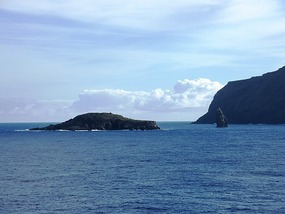
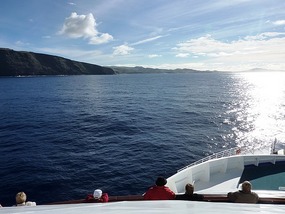
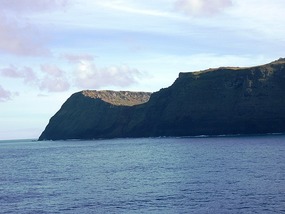
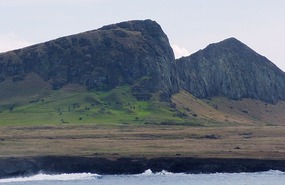
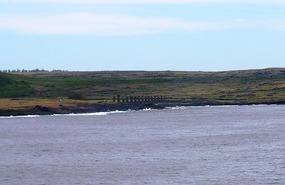
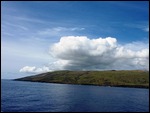



















Glenn
2014-08-19
Rosie blames it on the curry.
Peach
2014-08-25
http://blog.travelpod.com/travel-blog-entries/ginapeach/1/1286924425/tpod.html
This will have to do for now :/